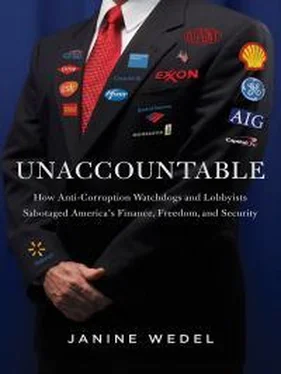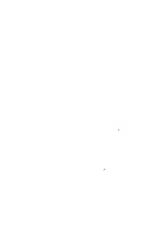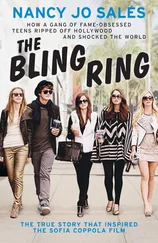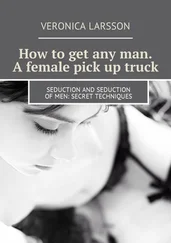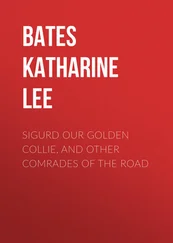Whose interests was Jester representing during those meetings that would affect the entire global economy? We’ll never know, since he was accountable to no one other than Paulson. We can never know for sure that Jester wasn’t just helping an old friend and the global economy through a grave crisis. And we will probably never know what role he played in securing the bailout terms that seemed to favor the interests of Goldman. The New York Times noted that Jester, not surprisingly, had holdings in the company. The Times also called him one of the “mystery men” of the financial crisis. And he is likely to remain so. He claimed to have “followed an ethics plan,” but we’ll have to take his word on that. 2
• Former Senate Majority Leader Tom Daschle helped shape President Obama’s signature legislation, healthcare reform, even while he was consulting for healthcare firms. His nomination to be Obama’s Secretary of Health and Human Services was derailed in 2009 after a brief scandal over unpaid taxes. But Daschle was already assuming a much less visible, yet influential, profile in healthcare reform before and after his withdrawal. Not long after leaving the Senate in 2005, he became a consultant to a private equity firm; 3joined a prominent Washington law and lobbying firm, Alston & Bird, advising various insurance and health companies, including UnitedHealth, though never registering as a lobbyist; 4served at a think tank that received funding from a pharmaceutical company; 5sat on a General Electric advisory board that devised loan incentives for rural doctors to buy the company’s software; 6and became a sought-after speechmaker at many healthcare outfits that might stand to gain from his access and prestige. 7He quickly evolved into a K-Street powerhouse in the healthcare business, moving from Alston & Bird to DLA Piper in 2009. 8He advised the White House and met with President Obama, Vice President Biden, and Senate Majority Leader Harry Reid to strategize on the Affordable Care Act, now popularly known as Obamacare. 9All this while simultaneously working with the healthcare industry on the application of new information technologies, among other matters. 10
What was Daschle’s agenda? On whose behalf was he working in his meetings with the president and on Capitol Hill? Perhaps the more important question is: How can we, the public, ever know? Daschle has lobbied so flagrantly, without registering, that his evasion technique has been described as the Daschle Loophole. 11Unaccountability, anyone?
• More recently, as the United States was considering military intervention in Syria, a strong voice appeared in the Wall Street Journal trying to allay fears that a U.S. air strike would simply aid rebel jihadists. 12Elizabeth O’Bagy’s August 2013 piece originally called her a senior analyst for the Institute for the Study of War. She had already been making her case in the media and to dozens of congressional offices, as well as to universities and think tanks. 13But this op-ed propelled her farther than all her other advocacy. Soon she was appearing on media outlets as disparate as Fox News and NPR’s Morning Edition. 14Both Secretary of State John Kerry and Senator John McCain cited her work during congressional hearings in their push to intervene in Syria, with McCain always pointedly calling her Dr. O’Bagy. 15
O’Bagy’s sudden rise to prominence took a turn, however, when her perhaps more relevant role was more directly identified. She apparently had a contract with a pro-rebel group, the Syrian Emergency Task Force, which itself has contracts with the U.S. and U.K. governments to aid the Syrian opposition. 16She had disclosed this role in some outlets, but it went unmentioned in the Wall Street Journal editorial. (O’Bagy was then also outed for lying about whether she had a Ph.D. from Georgetown University.) While she was fired from the Institute for the Study of War (for having misrepresented her credentials), for a brief, but significant, moment in a major debate, O’Bagy appeared frequently as an impartial expert when she was everything but. Disclosure was selective, and it appears that media outlets failed to examine her agenda carefully enough. 17Before this information came to light, how would we have known that we were being directed to a certain viewpoint? We, the public, had no way to sort this out because we didn’t know there was something to sort out. In the spirit of the era, O’Bagy rebounded fast, taking a job with Senator McCain. 18
Such novel power brokers have ushered in a whole new world of challenge as they shape, make, or pronounce on public decisions. Whether through op-eds, appearances as “experts” on television, radio, or the Internet, or in advisory capacities to public figures, they and those who promote them or put them on the air lead us to believe that they are acting in the public interest. But their feet are planted firmly in another set of (private) interests. And these official and private agendas intermesh in ways that make it impossible for us to know in a time frame that matters, if ever, what they are up to and whose agendas they serve.
The information system doesn’t work for us in the way it might have in the past. There was a time not so very long ago, at least in large swaths of the Western world, that we could have more confidence than we can now in the objectivity of the experts who advised government and pronounced on issues of vital importance. Roles of influencers and power brokers were better defined and more stable—like the banker, the minister, or the county official in my American Midwestern home community. That was before the sea change charted earlier in the book upended so many staples of society—from investigative reporting, to our interactions with Bank of America–like institutions, to the very core of what constitutes a bank, a think tank, or a media organization, to who carries out the work of government (officials or contractors?) and who is accountable for it.
The new-style influencers exude a shadow air in that their agendas or sponsors are obscured (Daschle and O’Bagy), or their titles do not comport with their outsize roles (Jester). In either case, we, the public, can’t quite know who or what is behind their influencing activities. We cannot say, since most of us are not privy to the venues they inhabit. We do not have the benefit of the face-to-face contact that one would need with the banker or minister or county official that would allow us to get a feel for whether they can be trusted. Yet the decisions the high-flying new players make without our input affect our lives and livelihoods in ways beyond measure.
In short, we, the public, have little possibility of holding them to account. None of the activities I have described is illegal or subject to ethics regulations. The players are sufficiently novel and unconventional that they fly beneath the radar of many watchdog organizations whose missions are to monitor registered lobbyists, interest groups, and the like. They even escape the notice of many investigative journalists.
But even if such power brokers flunk the smell test, what has this to do with corruption? Where does a super-clever way of exerting influence end and a violation of the public trust—the new corruption—begin?
The age we’re in has spawned a swarm of players to meet its needs. While most are unaccountable, not all, by any stretch, teeter on the edge of the new corruption. And only some tip over, violating the public trust.
Two kinds of all-out power brokers are by definition unaccountable and often abuse our trust. The modus operandi of these players, their sponsors, and their ways of organizing in and around all manner of entities (which we’ll explore in depth in Part II), make them unaccountable. Some, like Humpty Dumpty, fall full-face into the new corruption.
Читать дальше
